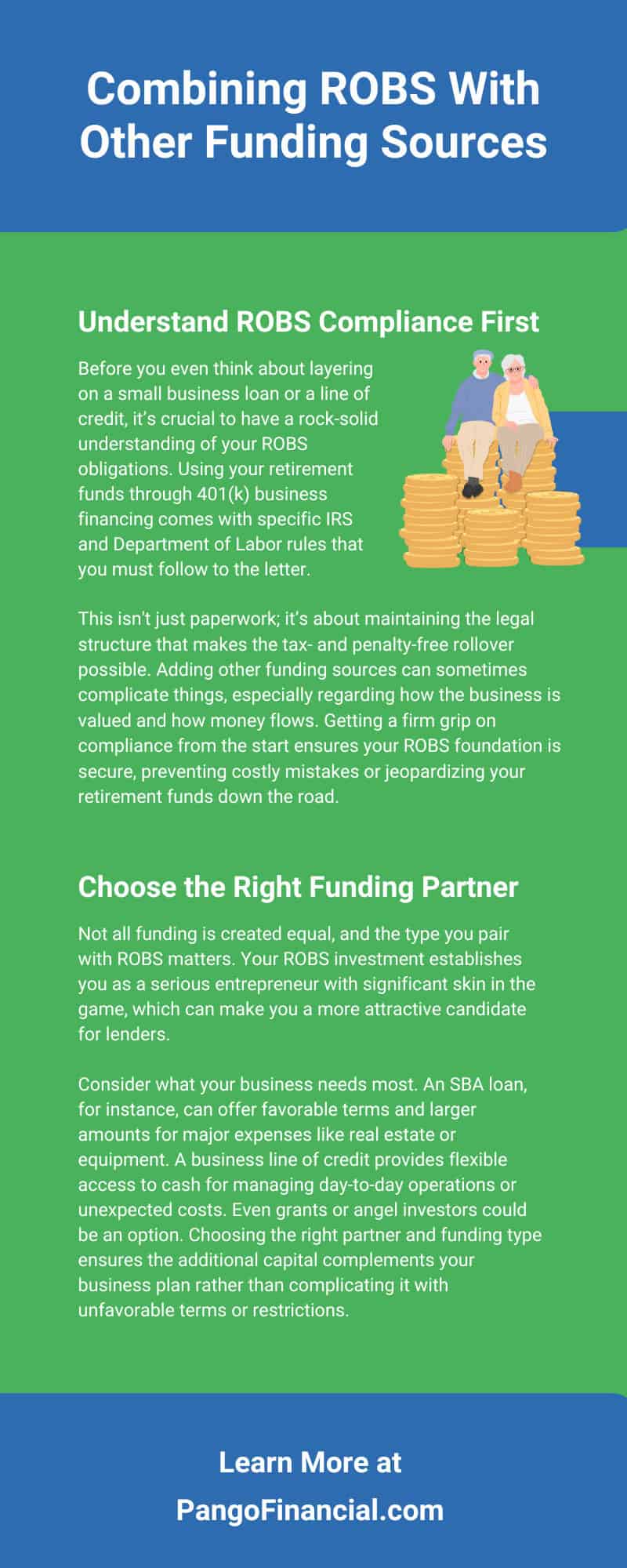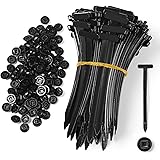Unlock the Secret Strategy: How Combining ROBS With Other Funding Sources Can Skyrocket Your Business Growth Overnight
Starting a business can sometimes feel like you’re staring at a giant jigsaw puzzle, but someone forgot to hand you the picture on the box. You’ve got this amazing idea, a solid blueprint in your head, yet there’s that nagging question: where on earth is the cash coming from? Here’s a kicker—many business hopefuls reach for their own savings. But for those sitting on a healthy retirement stash, there’s a secret weapon tucked away called Rollovers for Business Startups, or ROBS if you want to keep it snappy. Essentially, ROBS lets you tap into your 401(k) or other qualified retirement accounts to launch or buy a business — and here’s the best part — without triggering taxes or early withdrawal penalties. Pretty neat, huh?
Now, before you go all-in thinking ROBS is your golden ticket, let me throw a curveball. It doesn’t have to be the lone ranger for your funding needs. More often than not, savvy entrepreneurs discover the magic lies in mixing ROBS with other funding sources. Imagine it as weaving a safety net or fueling up your growth engine with extra horsepower. By blending your personal stake with options like small business loans, credit lines, or even some grants, you’re not just lighting a fire under your launch—you’re paving a smoother highway to success.
Nail Down ROBS Compliance Before Anything Else
Before you start daydreaming about stacking a small business loan or credit line on top of your ROBS, let’s pump the brakes and talk compliance. Using your retirement funds via 401(k) business financing carries some heavy-duty IRS and Department of Labor rules — and these aren’t mere formalities. This paperwork is the backbone that keeps your rollover both legal and penalty-free. Throwing in other capital sources can muddy the waters—think valuation hiccups or cash flow puzzles. So getting a handle on ROBS compliance upfront isn’t just smart; it’s essential to safeguard your retirement nest egg from costly slip-ups down the road.
Pick Your Funding Sidekick Wisely
Funding type matters—a lot. Your ROBS investment shows you’re putting skin in the game, which lenders absolutely notice. Now, what does your business really need? Perhaps it’s an SBA loan with friendly terms for equipment or property, or maybe a business line of credit that flexes to cover daily hustles or surprise expenses. Grants or angel investors might even enter the arena. Choosing the right partner and the right kind of cash isn’t just about availability — it’s about making sure this extra boost aligns with your business plan, avoiding unwelcome strings or sticky clauses that slow you down.
Spread the Bets: Don’t Bet the Farm
Putting every dime into one basket? That’s a gambler’s move, not a biz owner’s. Relying solely on ROBS means you’re essentially rolling the dice with your entire retirement fund. Confidence is great, but mixing ROBS with an external loan or credit line lets you share the risk. It’s like having a financial co-pilot. And when unexpected cash needs arise — because they always do — this hybrid strategy offers a vital cushion so you don’t have to dig deeper into your retirement fund.
Flexibility Is King for Growth and Cash Flow
Cash flow — it’s the lifeblood of any new venture and often a tightrope walk for startups. Your initial ROBS capital might ideally cover your launch, but what if a golden opportunity suddenly knocks? Or worse, a slow patch squeezes your budget? That’s where having another funding source—say, a business line of credit—steps in as your trusty sidekick. Tap into it for stocking up inventory, launching a marketing blitz, or hiring the right folks. This versatility means you can say “yes” to growth without hemorrhaging your core cash — a crucial skill for riding the rollercoaster waves of entrepreneurship.
Boost Your Street Cred with Lenders
When you stroll into a lender’s office, what’s the one thing they wanna see? That you’re just as invested in your business as they’d be loaning money to it. ROBS funding sends that signal loud and clear — you’re putting your own capital on the line. It’s not a “dream” or a “maybe” anymore; it’s your real gig, backed by your personal investment. That kind of commitment turns lender skepticism into trust, making it easier to score loans. Mix your ROBS money with outside financing and you’re not just seeking cash—you’re offering a partnership grounded in shared risk and mutual interest.
Build a Buffer for Those “Uh-oh” Moments
Unexpected expenses in business? You bet. Whether it’s a critical machine breaking down, suppliers hiking prices, or a marketing campaign demanding more funds, crises come knocking unannounced. Running solo on ROBS funds means it’s all on you—and




















Post Comment